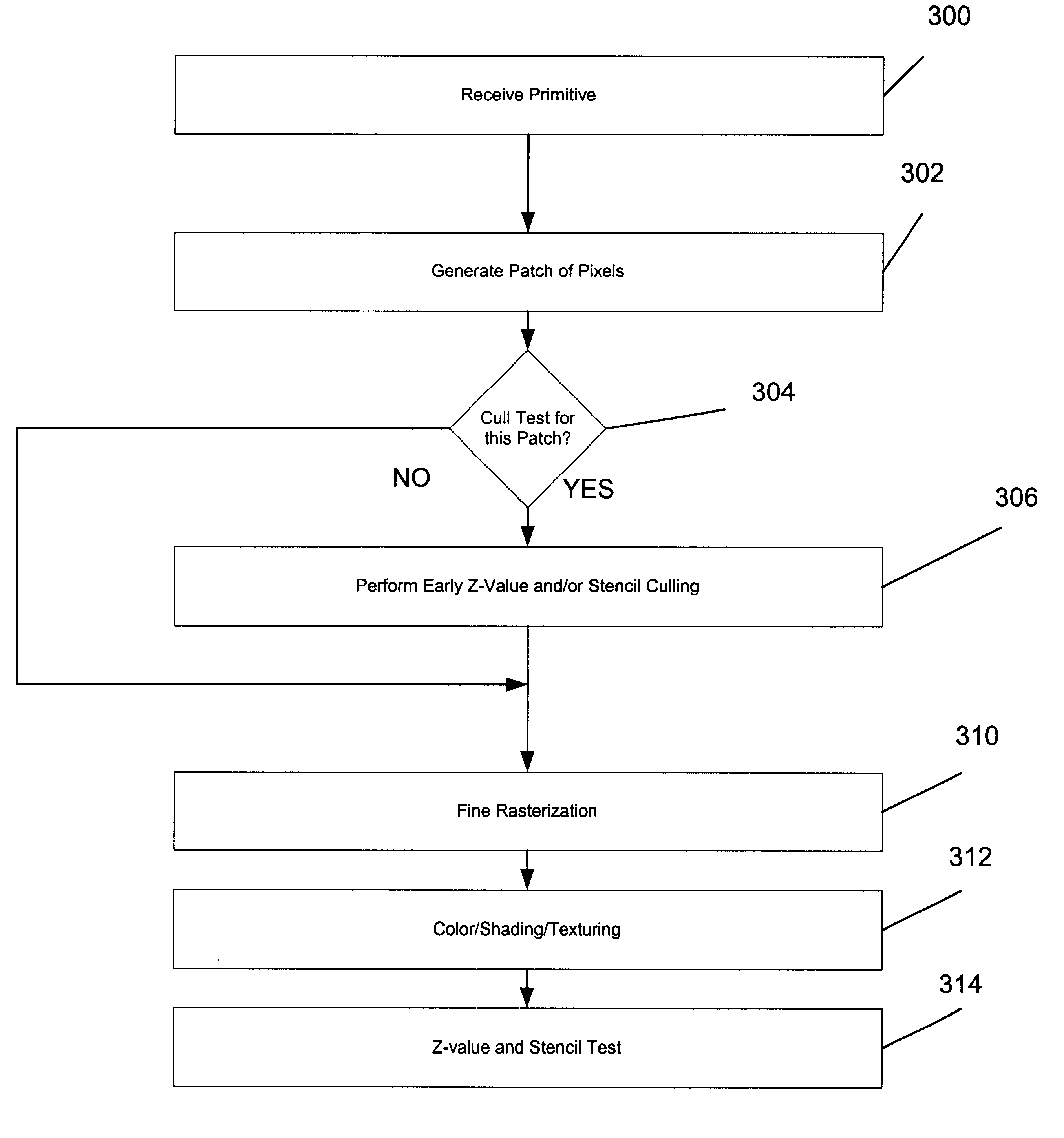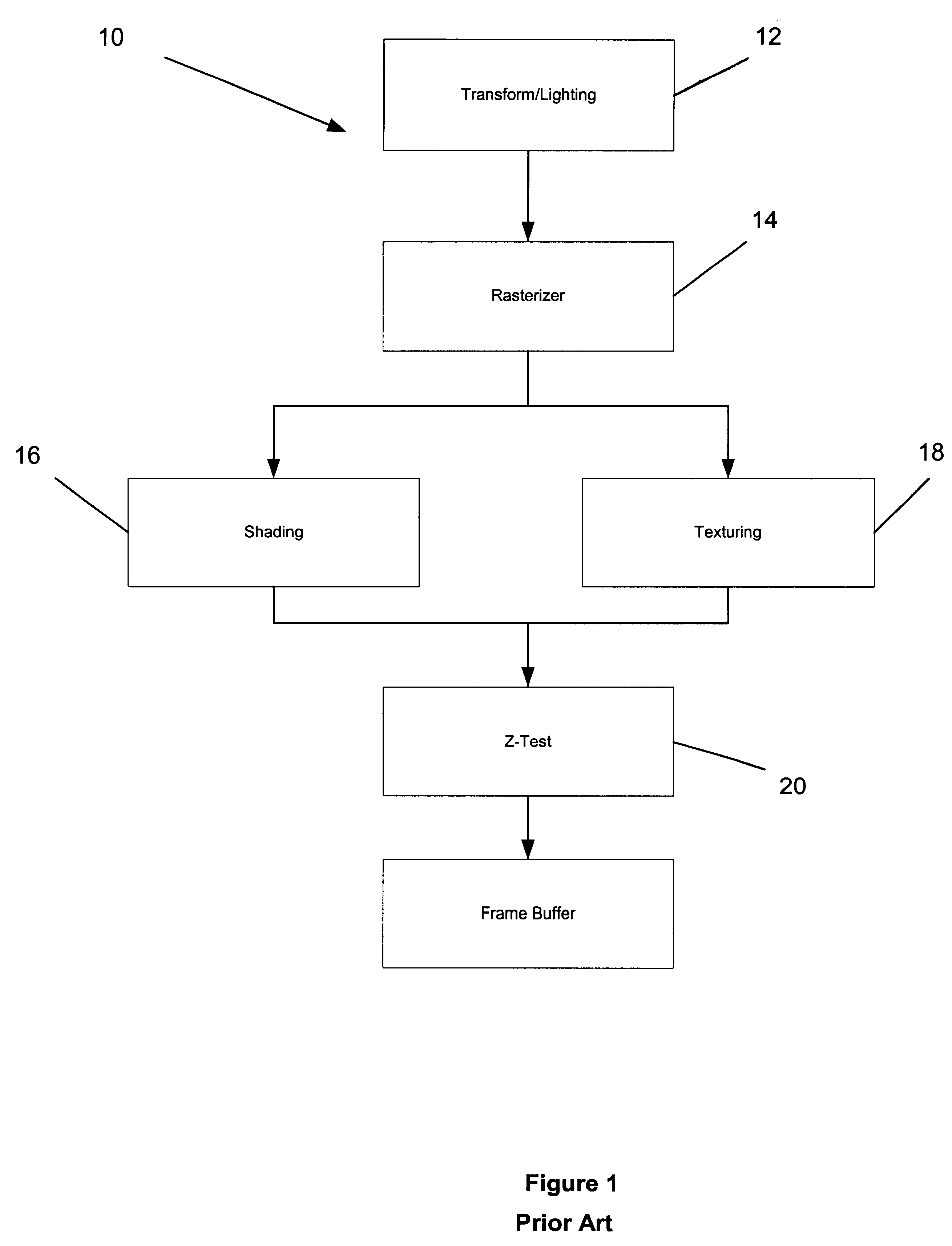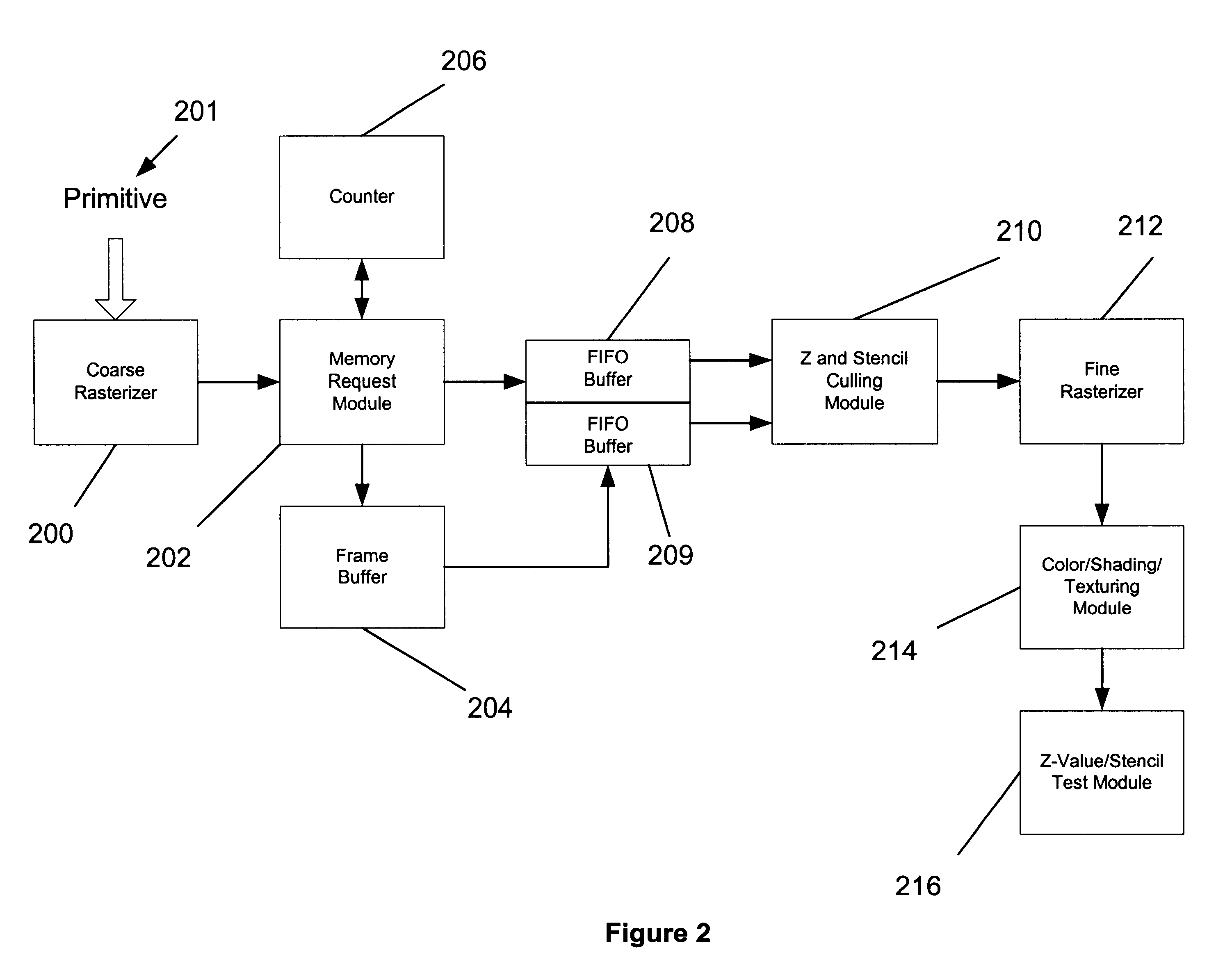System, method and article of manufacture for Z-value and stencil culling prior to rendering in a computer graphics processing pipeline
a computer graphics and pipeline technology, applied in the field of computer graphics, can solve the problems of consuming large bandwidth from texture memory, requiring expensive arithmetic, and complex computations, and achieve the effect of avoiding a large amount of processing
- Summary
- Abstract
- Description
- Claims
- Application Information
AI Technical Summary
Benefits of technology
Problems solved by technology
Method used
Image
Examples
Embodiment Construction
[0038]FIG. 1 illustrates a prior art graphics pipeline. FIG. 2 illustrates one embodiment of a hardware implementation of the present invention. As shown, a coarse rasterizer 200 is provided which is adapted to receive a primitive 201 from a set-up module or the like in a preceding portion of the graphics processing pipeline. In use, the coarse rasterizer 200 is equipped for limited rendering. In particular, the coarse rasterizer 200 serves to identify which pixels are eligible for Z-value culling.
[0039]Such limited rendering is accomplished by the coarse rasterizer 200 by providing a n×m patch of pixels naturally aligned in pixel space that at least partially overlaps the primitive 201, thus identifying which pixels are of interest. The n×m “footprint” represents the fetch granularity of pixels returned from a single memory access. To this end, the coarse rasterizer 200 narrows the range of what pixels need to be rendered. For reasons that will soon become apparent, each n×m patch ...
PUM
 Login to View More
Login to View More Abstract
Description
Claims
Application Information
 Login to View More
Login to View More - R&D
- Intellectual Property
- Life Sciences
- Materials
- Tech Scout
- Unparalleled Data Quality
- Higher Quality Content
- 60% Fewer Hallucinations
Browse by: Latest US Patents, China's latest patents, Technical Efficacy Thesaurus, Application Domain, Technology Topic, Popular Technical Reports.
© 2025 PatSnap. All rights reserved.Legal|Privacy policy|Modern Slavery Act Transparency Statement|Sitemap|About US| Contact US: help@patsnap.com



